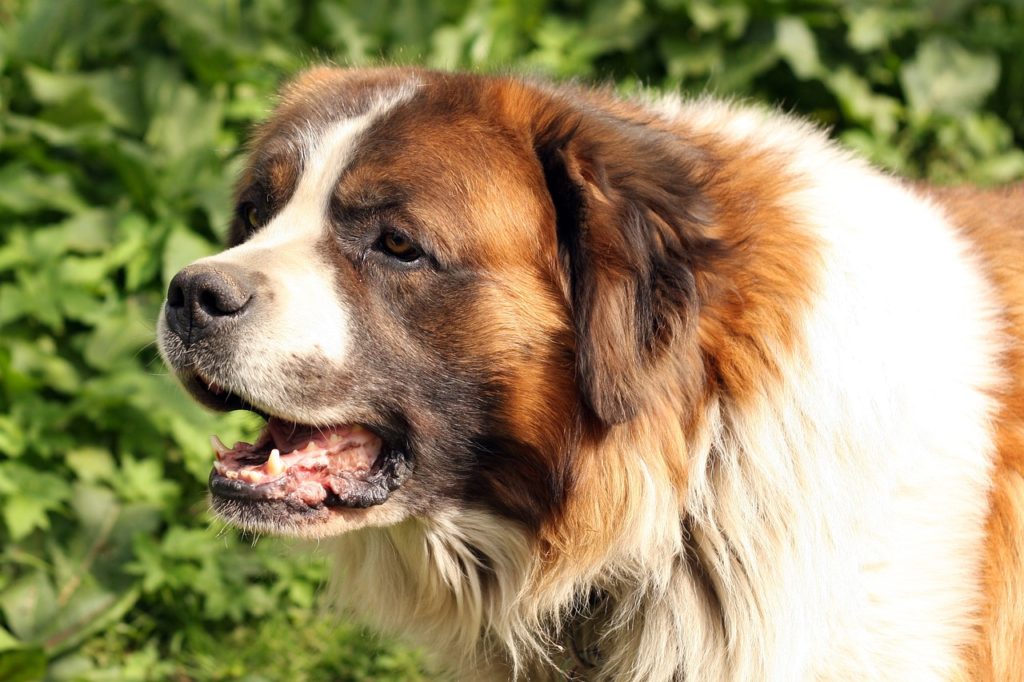Introduction
If you’re in search of a dog that possesses both strength and gentleness, then look no further than the Saint Bernard! This iconic breed has won the hearts of dog lovers worldwide, known for their massive size, kind eyes, and friendly personalities. In this article, we will delve into the history, physical characteristics, temperament, health, care, feeding, exercise, and training of the St. Bernard.
Saint Bernard: History and Origin
Monks bred the Saint Bernard in the hospice of the Great Saint Bernard Pass in the Swiss Alps. The dogs were trained as rescue dogs to locate and save travelers lost in the snow and mountains. The breed was named after Saint Bernard of Menthon, who constructed the hospice in the 11th century and was known as the patron saint of mountaineers.
During their years of service, St. Bernards saved many lives. The dogs worked in teams, with one dog following the scent of a lost traveler while the other stayed with the rescuer to provide warmth. The breed gained international recognition in the 19th century when Barry, a St. Bernard, saved 40 people in the Swiss Alps.
Physical Characteristics of the Saint Bernard
The St. Bernard is a large breed, with males typically weighing between 140-180 pounds and females weighing between 120-140 pounds. They have a thick, double-layered coat that is either short or long, and they come in a variety of colors including white with red, brown, or brindle markings. Their eyes are usually brown, and they have a distinctive droopy appearance.
One of the most recognizable features of the St. Bernard is their massive head, which is proportionate to their body size. Their ears are also quite large and hang down close to their head. The breed has a gentle expression that belies their strength, and they are known for their lumbering gait.
Saint Bernard’s Temperament and Personality
Despite their size and strength, the Saint Bernard is known for their gentle nature and friendly personality. They are affectionate dogs who love to be around people and are great with children. They have a patient and tolerant demeanor, making them ideal family pets.
The breed is intelligent and loyal, and they make great watchdogs due to their protective nature. While not aggressive, they will protect their family if they perceive danger. They are also very social dogs and do not like to be left alone for extended periods.
Health and Care Needs
The St. Bernard, like all breeds, is susceptible to certain health conditions. Common health problems include hip dysplasia, bloat, and arthritis. It is crucial to work with a reputable breeder and have your dog regularly checked by a veterinarian to ensure that they are healthy.
Feeding your Saint Bernard
As a large breed, the St. Bernard requires a substantial amount of food to maintain their size and energy levels. It is essential to feed them a high-quality diet that is suitable for their age and activity level. Monitoring their weight and adjusting their food intake is necessary to prevent obesity, which can lead to health issues.
Exercise and Training
Although the St. Bernard is a low-energy breed, they still require regular walks and playtime to keep them healthy and happy. They are also intelligent dogs and benefit from training and mental stimulation. Quick learners, they enjoy activities such as obedience training and agility.
Conclusion
In conclusion, the St. Bernard is a remarkable breed of dog that embodies the qualities of strength, gentleness, and loyalty. Their history as mountain rescue dogs highlights their intelligence, dedication, and courage, and they have become beloved family pets due to their kind and affectionate personalities. St. Bernards require some specific care and attention due to their size, but the reward of having such a wonderful companion is priceless. If you are looking for a loyal and loving addition to your family, consider the St. Bernard. Their massive size and gentle nature are sure to capture your heart and bring joy to your life!
St Bernard Image Gallery






